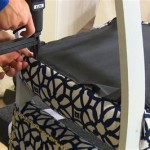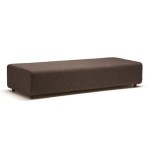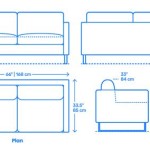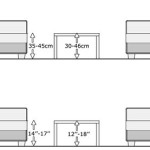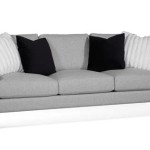Recovering Leather Sofa Cushions With Fabric
Leather sofas offer a classic, sophisticated aesthetic, but over time, the leather can become worn, cracked, or simply outdated. Recovering the cushions with fabric provides a cost-effective solution to revive a beloved piece of furniture without the expense of complete replacement. This process, while requiring some effort and precision, is achievable for the dedicated DIY enthusiast.
Before embarking on the project, careful planning and material selection are crucial. Assess the condition of the existing cushions. If the foam or filling is compressed or damaged, replacement is recommended. High-density foam offers superior support and longevity. Measure the cushions precisely to determine the amount of fabric required. Choosing a durable, upholstery-grade fabric is essential for withstanding regular use. Consider factors such as color, pattern, texture, and cleaning requirements to ensure the fabric complements the existing sofa frame and overall décor.
Gathering the necessary tools and materials streamlines the reupholstering process. Essential tools include a heavy-duty staple gun, staple remover, scissors, measuring tape, seam ripper, and a sharp utility knife. Materials required include the chosen upholstery fabric, high-density foam (if replacing), upholstery batting or Dacron wrap, and heavy-duty thread.
The first step involves carefully removing the existing leather covers. If the covers are stitched, a seam ripper can be used to carefully undo the seams. If staples are present, a staple remover is employed to extract them without damaging the underlying foam. Once the leather covers are removed, they can serve as a pattern for cutting the new fabric. Lay the old cover flat on the chosen fabric, ensuring proper alignment. Trace around the cover, adding a few inches of seam allowance on all sides. This extra fabric provides flexibility during the upholstery process.
If the cushion foam is being replaced, cut the new foam to the exact dimensions of the original cushion. Wrap the foam with a layer of upholstery batting or Dacron wrap. This layer adds a smooth, rounded appearance to the finished cushion and provides an extra barrier against wear and tear. Secure the batting with staples, ensuring a snug fit.
With the new fabric cut and the foam prepared, the upholstery process can begin. Lay the fabric face down on a flat surface. Place the foam core, wrapped in batting, centrally on the fabric. Begin stapling the fabric to the foam, working from the center of one side outwards. Maintain consistent tension to avoid wrinkles or loose areas. Repeat this process on the opposite side, ensuring the fabric is evenly stretched. Trim any excess fabric around the edges.
Addressing the corners requires careful folding and stapling to achieve a neat, professional finish. Fold the fabric at the corners to create a clean, mitered edge. Secure the folds with staples, ensuring a smooth transition from one side to the other. Trim any excess fabric to create a crisp corner.
For cushions with welting or piping, this decorative element is typically added after the main fabric is attached. Welting adds a sophisticated touch and helps to define the edges of the cushion. Pre-made welting can be purchased, or it can be created using fabric scraps and cording. Attach the welting using a zipper foot on a sewing machine or by hand-stitching. Ensure the welting is evenly spaced and securely fastened.
Once the cushions are fully upholstered, they can be placed back onto the sofa frame. The transformation from worn leather to fresh fabric revitalizes the sofa's appearance, adding a new dimension of style and comfort. Regular maintenance, such as vacuuming and spot cleaning, will help to preserve the fabric's appearance and extend the life of the newly upholstered cushions.
Different fabric types will necessitate different cleaning approaches. Always refer to the manufacturer’s instructions for the specific fabric used. Professional cleaning may be required for delicate fabrics or stubborn stains. Protecting the fabric with a stain-resistant spray can help to prevent spills and stains from penetrating the fibers.
Recovering leather sofa cushions with fabric offers a rewarding opportunity to personalize and refresh a cherished piece of furniture. With careful planning, precise execution, and attention to detail, this project can be successfully completed, resulting in a renewed and revitalized sofa that will provide comfort and style for years to come.

Recover Your Sofa From Leather To Fabric Stunning Transformation And A Lot Er Than New Rescot Upholstery

We Are Considering Recovering Our Leather Sofa Cushions With Fabric This Is Perfect Minus The On Brown Comfy Chair

Leather Sofa Repadding The Fast And Affordable Way To Give New Life Your Rescot Upholstery

Change A Bonded Leather Sofa To Fabric Rescot Upholstery

Tutorial Diy Upholstery Sofa Rehab A Jennuine Life

Leather Upholstery Furniture Sofa Chairs Couches Ottomans Replace And Recover New Restuffing Sagging Broken Down Foam

How To Reupholster Attached Couch Cushions It 39 S Been A Very Long Time Since I Ve Posted Diy

How To Reupholster Leather Sofa With Severe Ling Of Surface Hometalk

Do It Yourself Divas Diy Strip Fabric From A Couch And Reupholster

Is It Worth To Reupholster A Sofa Seatup Llc



